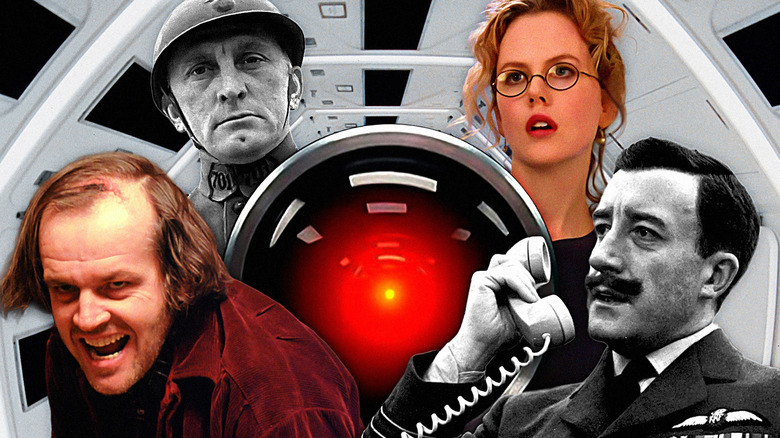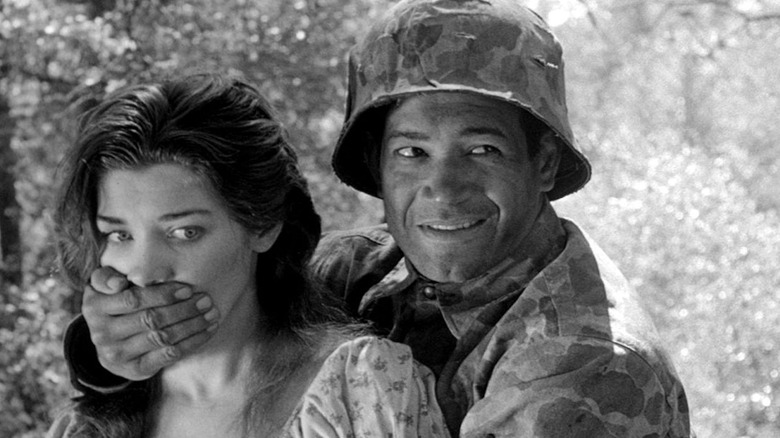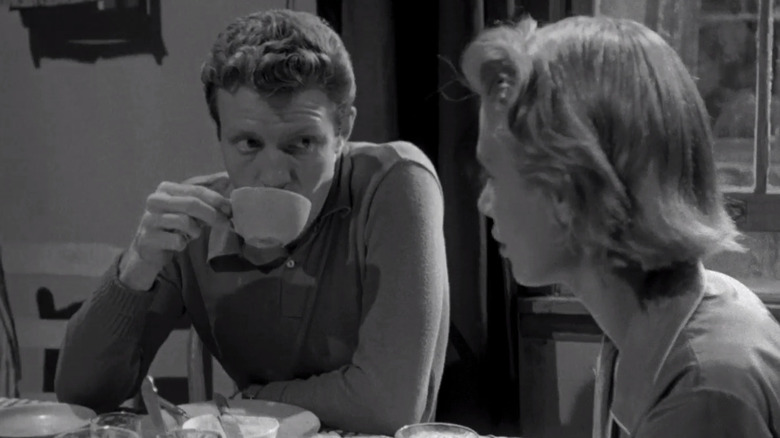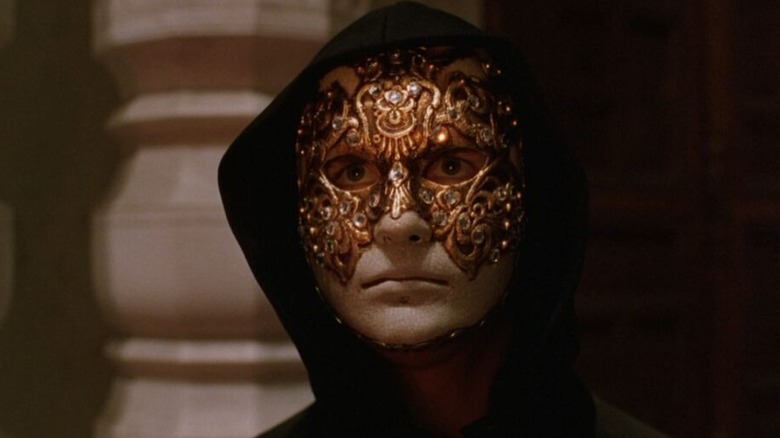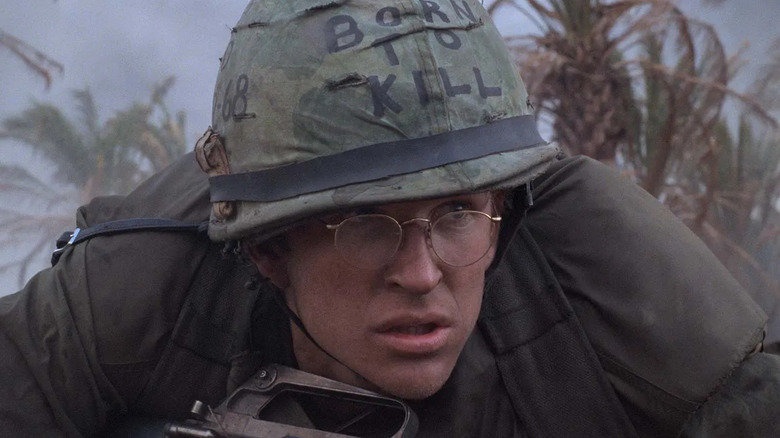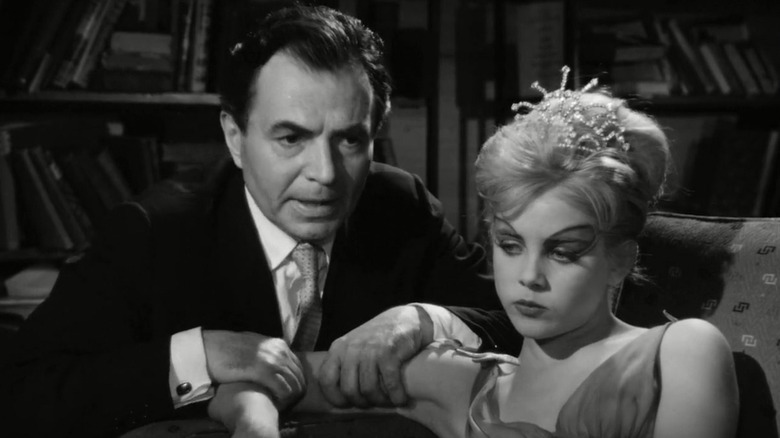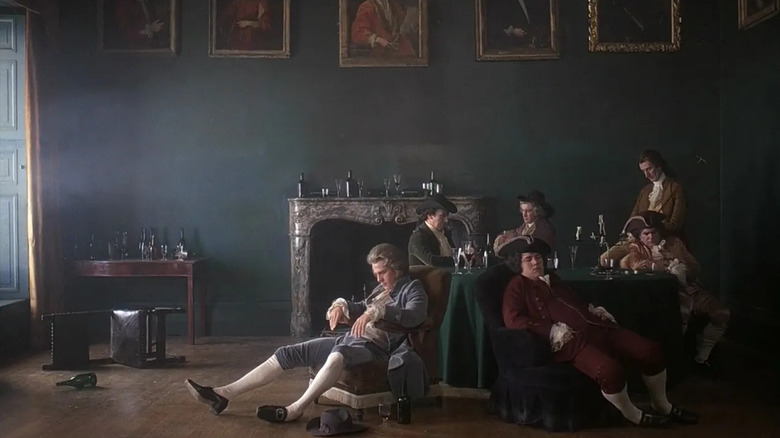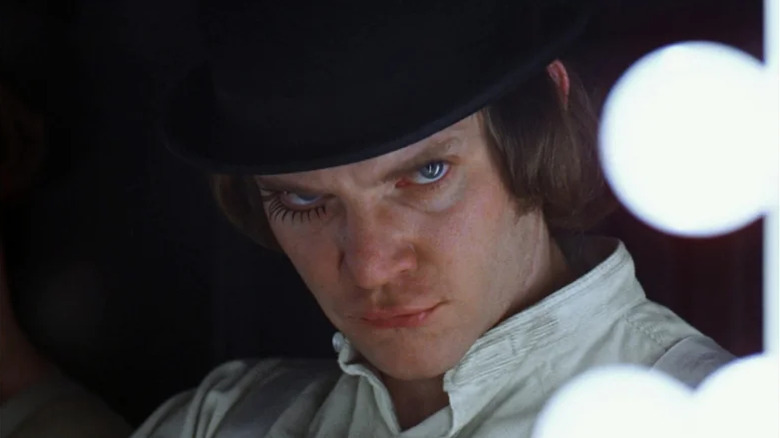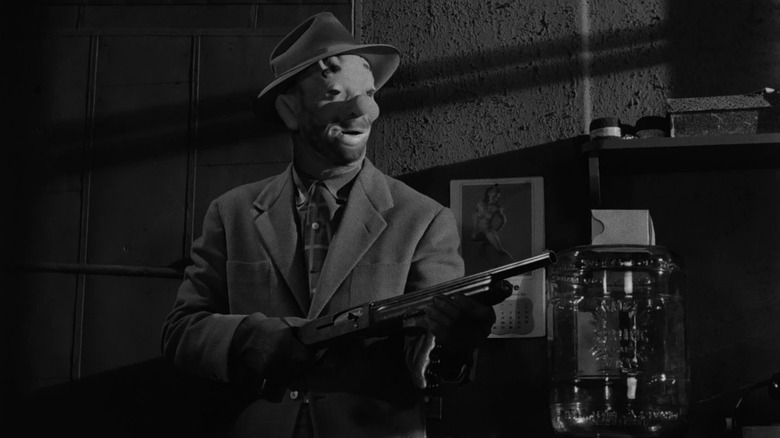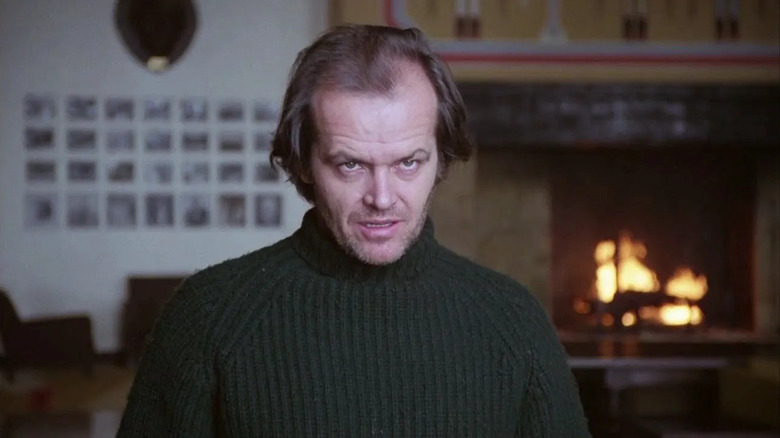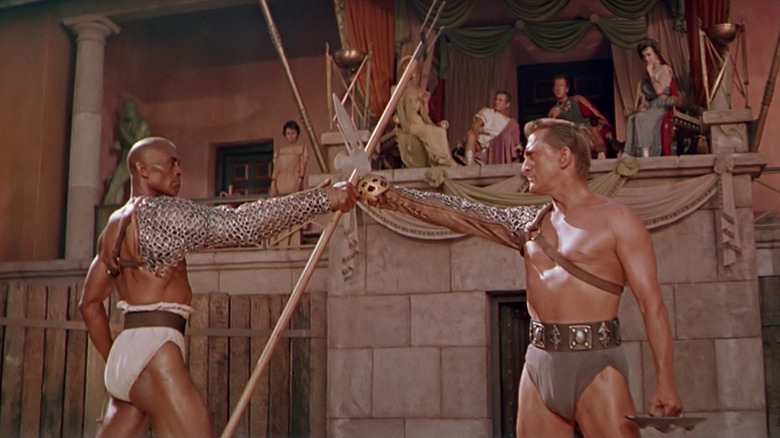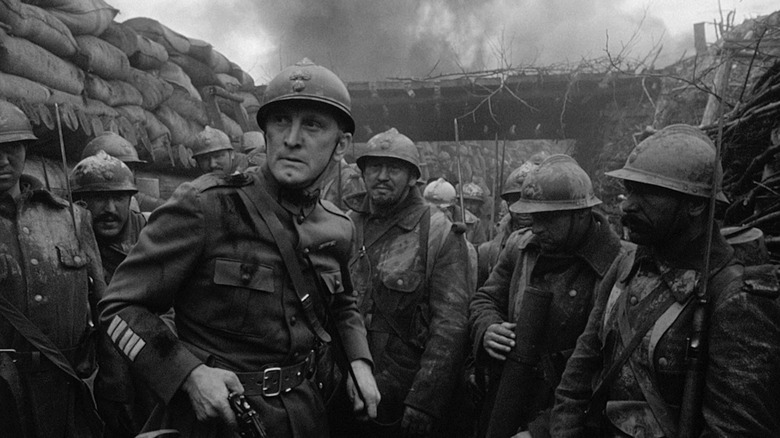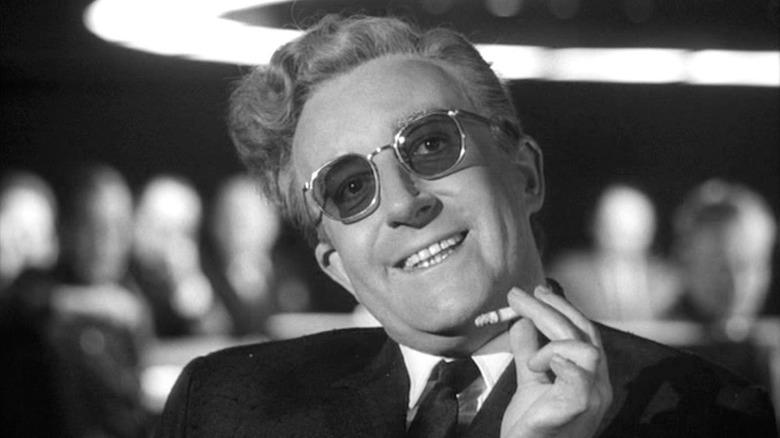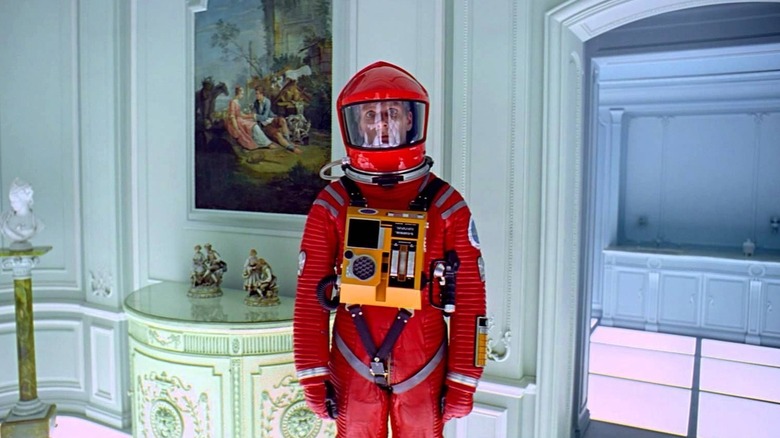Every Stanley Kubrick Movie Ranked
We may receive a commission on purchases made from links.
One of the most visually striking and influential American filmmakers of the 20th century is Stanley Kubrick. With a career spanning nearly 50 years, Kubrick directed movies that covered virtually every major genre, from Cold War comedy to supernatural horror. Kubrick was also somewhat notorious for his perfectionist tendencies, preparing and over-preparing during all stages of production to get the specific effect that he wanted. This meticulous attention to detail elevated Kubrick's work, even as it occasionally ran the cast and crew behind his movies ragged.
Yet, despite his rigorous work ethic, or indeed because of it, Kubrick crafted some of the most enduring films of all time. While he is perhaps unfairly described as being overly cold and clinical in his work, Kubrick also helped give cinema some of its most iconic characters. Kubrick was also something of a literary director, not just in adapting popular books but how he approached staging scenes and actors.
Having completed 13 movies over his lifetime as a director, here is every Stanley Kubrick movie ranked.
13. Fear and Desire
Stanley Kubrick's feature directorial debut, 1952's "Fear and Desire," is understandably also his movie that's the roughest around the edges. Originally titled "Shape of Fear," the movie examines a war between two unnamed countries through the perspective of a small group of soldiers who crashed behind enemy lines. The troops move to assassinate an enemy general, committing morally questionable acts along the way that take a toll on their sanity. This leads them to openly debate the merits of war and its humanistic impact on those that engage in it.
Kubrick reportedly convinced his friends and family to help bankroll the movie, raising $50,000 to fund the production and taking on multiple roles as director, cinematographer, editor, and producer. Even in this prototypical stage, the movie shows a lot of promise from Kubrick and contains the anti-war themes common in his later work. Kubrick himself was not a fan of the final film, trying unsuccessfully to destroy it before it fell into public domain. "Fear and Desire" certainly is Kubrick's weakest effort, but given its interesting elements and its importance in his overall career, it's worth checking out.
12. Killer's Kiss
Kubrick's sophomore feature was the independently produced noir movie "Killer's Kiss," with Kubrick handling multiple production roles again to complete the film. The movie centers on the budding romance between New York boxer Davey Gordon (Jamie Smith) and dancer Gloria Price (Irene Kane). This incurs the wrath of local crime boss Vincent Rapallo (Frank Silvera), who has his own amorously unwanted designs on Gloria. The two young lovers endure a harrowing gauntlet escalating into kidnapping and murder as they try to stay one step ahead of Rapallo.
As a crime noir, "Killer's Kiss" is much more comparable to its 1955 contemporaries than "Fear and Desire," and one of the more straight-laced efforts by Kubrick. Running just over an hour, the movie feels like it ends just as it starts to gain momentum, but Kubrick still stages some impressive scenes despite its shoe-string budget. What "Killer's Kiss" lacks in substantive story it makes up for with Kubrick's unique eye for capturing New York, especially through the noir genre. A marked improvement over "Fear and Desire," Kubrick was confidently growing into the filmmaker he would become, but not quite there yet.
11. Eyes Wide Shut
The final film that Kubrick ever completed was 1999's "Eyes Wide Shut," itself a very loose adaptation of the 1926 Austrian novel "Dream Story" by Arthur Schnitzler. The movie centers on married couple Bill (Tom Cruise) and Alice Harford (Nicole Kidman), who both grow increasingly restless and sexually unfulfilled. Through his work as a doctor, Bill has several lurid encounters, culminating in discovering a secret society revolving around sex. This piques Bill's curiosity as he tries to learn more about this sensually clandestine side to New York City.
For a director reputed to be emotionally distant, "Eyes Wide Shut" is arguably Kubrick's most fascinating exploration of human nature. From its frank commentary on sexuality to marital disillusionment, the movie challenges and provokes the audience over their preconceptions of carnal desire. Though the pacing can be a bit meandering, "Eyes Wide Shut" also provides viewers with some of the most haunting and evocative visuals in a Kubrick film. Though initial response was more mixed, Kubrick's swan song has seen its reputation improve over time as audiences connect with it more readily.
10. Full Metal Jacket
Just as Kubrick started his career with a war film, he returned to the genre for his penultimate completed project, 1987's "Full Metal Jacket." Set during the height of the Vietnam War, the movie adapts Gus Hasford's autobiographical novel ""The Short-Timers" and is divided into two distinct sections. The first half details the grueling training that James "Joker" Davis (Matthew Modine) and his fellow USMC recruits undergo. The second half of the story follows Joker's unit in Vietnam during the Tet Offensive, including a deadly encounter with an enemy sniper.
"Full Metal Jacket" is one of those movies that feels like completely different films, at least tonally, packaged together. The training camp sequences that open the film are among the most iconic Kubrick ever directed, while the actual sequences set in Vietnam continue to divide audiences. By numerous accounts, the making of "Full Metal Jacket" was a particularly punishing experience, including for Kubrick himself. That behind-the-scenes agony helps underscore the haunting loss of humanity captured in the movie, with the first half of "Full Metal Jacket" compensating for much of its deficiencies.
9. Lolita (1962)
Vladimir Nabokov's controversial 1955 novel "Lolita" was adapted by Kubrick into a dark dramedy in 1962. Given its premise of a middle-aged man falling in love with a teenager, Kubrick and producer James B. Harris downplayed the inappropriate sexual elements of the novel considerably. However, the broad narrative remains, with European professor Humbert (James Mason) falling for Dolores (Sue Lyon), the teenage daughter of his landlady. Humbert tries to conceal the true nature of his relationship with Dolores from a rightfully discerning public.
Kubrick reportedly discarded the vast majority of Nabokov's screenplay for the adaptation, though the story still raises eyebrows, of course. The role of Humbert is the most complex in Mason's distinguished career, leaning more into the comedy of his morally questionable character. That comedic sensibility is highlighted by Peter Sellers, playing a Clare Quilty, who pursues Humbert and Dolores under a variety of disguises. Certainly not everyone's cup of tea, Kubrick delivered what is probably the most acceptable screen version of "Lolita," especially compared to the more faithful 1997 adaptation.
8. Barry Lyndon
After directing two back-to-back movies set in the future, Kubrick looked to the past for his 1975 period piece drama "Barry Lyndon." Adapting William Makepeace Thackeray's 1844 novel "The Luck of Barry Lyndon," the movie follows 18th century ne'er-do-well Redmond Barry (Ryan O'Neal) in his misadventures across Europe. After a mishap-filled tenure in the British military, Barry seduces the wealthy Lady Lyndon (Marisa Berenson), taking her name after their marriage. However, Barry's loutish behavior only amplifies in married life, to the consternation of Lady Lyndon's family as he descends their household into misery.
With his insistence on utilizing natural light to match its period setting and special camera lenses from NASA, "Barry Lyndon" is the most visually striking movie in Kubrick's filmography. Set pieces and establishing shots are staged like period-appropriate paintings, emphasizing the story's classical origins. That all said, the movie is also among Kubrick's slowest-moving in terms of pacing, which is acutely felt. A cinematic portrait of disaffected aristocracy in 18th century Britain, "Barry Lyndon" plays out like a gallery of beautifully rendered vignettes.
7. A Clockwork Orange
Author Anthony Burgess' satirical science fiction novel "A Clockwork Orange" was adapted into an unflinching dystopian movie by Kubrick in 1971. Taking place in a dystopian future Britain, the story revolves around gang leader Alex DeLarge (Malcolm McDowell), who leads his ensemble of hooligans in violent crimes around town. Arrested after murdering a woman, Alex endures a torturous rehabilitation program that overwhelms him with violent and sexual imagery, leaving him adverse to both. Released after completion of the program, Alex finds himself out of sorts in a world that he once cockily terrorized.
"A Clockwork Orange" is arguably Kubrick's most controversial film, derided for its graphic depictions of violence and sexual assault. The movie is also Kubrick at his most daring, blending pointed satire targeting societal control with bombastic aplomb through McDowell's virtuoso performance. Concerned with the possibility of copycat crimes, Kubrick himself agreed to have the movie pulled for over 25 years, inadvertently lending to the film's mystique. Easily Kubrick at his most cinematically vicious, "A Clockwork Orange" is sadistic satire that is as well-crafted as it is unabashedly cruel.
6. The Killing (1956)
Kubrick's third film was another exploration of the crime noir genre, with 1956's "The Killing" adapting Lionel White's novel "Clean Break." The movie has recently paroled crook Johnny Clay (Sterling Hayden) organizing an elaborate heist of a local racetrack. Despite the careful planning, the heist is derailed by Sherry (Marie Windsor), the indiscreet wife of one of the conspirators. Fleeing for their lives with the money, the surviving thieves try to make it to freedom with their ill-gotten gains.
Of Kubrick's crime movies, "The Killing" is the better of the two by leaps and bounds, with Kubrick really coming into his own as a filmmaker. No small part of this improvement comes from the movie featuring a more experienced ensemble cast and longer runtime to breathe. Though the genre and narrative premise is well-worn, Kubrick's unique eye for cinematography elevates the film above many of its contemporaries. By "The Killer," the filmmaking training wheels were completely off for Kubrick, setting the stage for even greater things to come.
5. The Shining
While Kubrick's later films have had strong thriller elements, the only time he went full-on into the horror genre was for 1980's "The Shining." Adapting one of Stephen King's most personal novels, the movie has Jack Torrance (Jack Nicholson) accepting a caretaker position at the Overlook Hotel. Confined to the premises after a massive blizzard, the Torrance family discover the hotel not only has a particularly dark history but is haunted by malevolent ghosts. Jack is targeted by these malicious spirits, who drive him murderously insane to menace his own family.
While Stephen King understandably hated Kubrick's adaptation of his work, "The Shining" is still an iconic horror movie and standout project in Kubrick's filmography. Kubrick is fantastic at instilling a mounting sense of dread that builds to a bloody crescendo by the final act. When all hell inevitably breaks loose, the terror gleefully captivates the audience with Nicholson absolutely unhinged in his memorable performance. The legacy of "The Shining" has only improved over time, separated from King's criticism and enhanced by follow-ups like Mike Flanagan's "Doctor Sleep."
4. Spartacus
In his most ambitious movie at that time, Kubrick shifted to a period piece epic for his 1960 adaptation of the historical novel "Spartacus" by Howard Fast. Kirk Douglas stars as the Thracian champion, who rises from status as a slave to Roman aristocrat Crassus (Laurence Olivier) to lead a rebellion. Spartacus' leadership qualities and combat skills inspire an entire movement of oppressed to join him, alarming the Roman Senate. The jealous Crassus uses this opportunity to seize power for himself while hunting down his defiant former slave.
"Spartacus" is Kubrick's most conventionally presented film, matching a lot of swords-and-sandals epics that were in vogue at the time. The project reunited Kubrick with Douglas, who had starred in the former's preceding film and persuaded him to make the historical war movie. This led to friction between Kubrick and Douglas, with the director being uncomfortable with the scope of the big studio production and unhappy with the final results. Kubrick's misgivings aside, "Spartacus" is one of his best movies and best films in the genre, standing the test of time.
3. Paths of Glory
Anti-war themes were a recurring element in Kubrick's work, most effectively realized in the 1957 war movie "Paths of Glory." Adapting Humphrey Cobb's World War I novel of the same name, the film stars Kirk Douglas as French military officer Colonel Dax. After a detachment of soldiers refuse to participate in a clearly suicidal attack on German trenches, Dax volunteers to defend the men during the subsequent court-martial trial. Facing an unsympathetic military tribunal, Dax leads the legal defense despite the clearly farcical proceedings condemning the accused to their fate.
Given how particularly grim conditions during WWI were, "Paths of Glory" is an appropriately bleak story. Douglas vocally appreciated Kubrick firmly sticking to the adaptation's ending, though the director contemplated switching to a happier ending. Like many of his projects, "Paths of Glory" isn't a feel-good movie at all, but shines a light on the devaluation of human life during wartime. For anyone who dismisses Kubrick as an emotionally detached filmmaker, a screening of "Paths of Glory" should debunk this assumption right away.
2. Dr. Strangelove or: How I Learned to Stop Worrying and Love the Bomb
Kubrick combined his anti-war messaging with the dark comedic collaboration he honed with Peter Sellers in "Lolita" for the 1964 satire "Dr. Strangelove." The movie involves a rogue American general (Sterling Hayden) who orders an unauthorized nuclear strike on the Soviet Union. The American government scrambles to recall this strike and regain control of the situation to avoid an all-out nuclear war. Sellers plays three different roles: a British military officer, the titular nuclear war expert, and the President of the United States.
Something modern audiences may take for granted is that "Dr. Strangelove" takes all that existential anxiety prevalent throughout the Cold War and makes it something okay to laugh about. With his trio of characters, Sellers gives arguably his greatest performance, particularly as the screwball character of Dr. Strangelove himself. But what makes the movie stand out is that it plays jokes relatively deadpan, supported by its black-and-white cinematography. Immaculately crafted, "Dr. Strangelove" is the textbook example of a political satire done well.
1. 2001: A Space Odyssey
The definitive Stanley Kubrick movie is 1968's "2001: A Space Odyssey," an imaginative science fiction film that continues to hold up over 50 years later. Working with influential sci-fi writer Arthur C. Clarke, Kubrick crafted a mystery spanning space and time as a strange monolith kickstarts human evolution. As humanity expands its presence throughout the solar system, a spacecraft bound for Jupiter is threatened by its malevolent artificial intelligence program HAL 9000. Astronaut David Bowman (Keir Dullea) faces the sinister computer program before the mystery of the extraterrestrial monoliths resurfaces.
"2001" combines Kubrick's striking visual sensibilities with an evocative sci-fi production design to great effect and is a complex technical marvel. It's a wonder that Kubrick never really delved into the sci-fi genre in a significant fashion afterwards, incomplete projects notwithstanding, because he demonstrates a clear strength for it here. And no other Kubrick movie leaves the audience pondering over its deliberately unanswered questions as they contemplate what they just saw. A haunting experience that uses cinema as a dynamic canvas, "2001: A Space Odyssey" is Kubrick's masterpiece.
